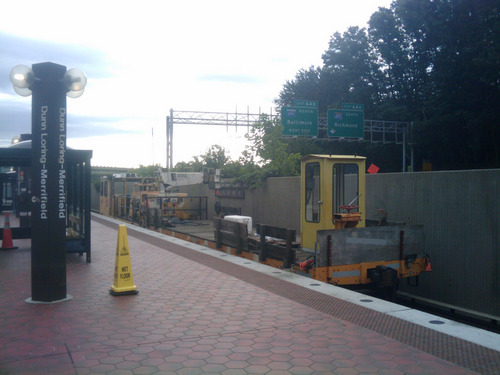Public reaction to Metro’s proposed cuts proves the need to be vastly more transparent about rebuilding
Metro has a trust problem that’s impeding the agency’s ability to fix its decaying rail system. Riders and city officials don’t believe the agency’s proposed permanent cuts are necessary. To solve this one way or another, Metro must regain rider trust by precisely reporting exactly what its rebuilding needs are, and whether efforts thus far have been successful.

To gain public trust, Metro needs to be much more specific about the kinds of track work it needs to do, and why. Photo by brownpau on Flickr.
This series of seven tweets explains why this problem persists, and how being legitimately transparent can only help WMATA achieve its goals.
#WMATA's maintenance needs are huge & real. But public patience & trust are thin bc despite all the work, things get worse every year. 1/7
— BeyondDC (@beyonddc) September 8, 2016
Is #WMATA making progress towards a state of good repair, or continuing to lose ground? The public doesn't know. Maybe nobody knows. 2/7
— BeyondDC (@beyonddc) September 8, 2016
Because #WMATA is such a black hole, nobody can effectively advocate for permanent solutions or resources. 3/7
— BeyondDC (@beyonddc) September 8, 2016
Therefore #WMATA must no longer be a black hole. They must define what success looks like in this battle for state of good repair. 4/7
— BeyondDC (@beyonddc) September 8, 2016
We need a comprehensive, public, updated-monthly web report on #WMATA's maintenance needs going forward. Mile for mile, track for track. 5/7
— BeyondDC (@beyonddc) September 8, 2016
Let the public see *exactly* what needs to be done, and what progress has been made. Don't hide from it. Embrace it. Open it up. 6/7
— BeyondDC (@beyonddc) September 8, 2016
If #WMATA is making progress, it'll build trust. If not, we'll know something bigger has to change. Either option beats today. 7/7
— BeyondDC (@beyonddc) September 8, 2016
WMATA has tried to explain its maintenance plans, and has occasionally reported on progress, but there’s no single resource available to riders all the time that compiles all Metro’s needs, both SafeTrack and non-SafeTrack, and reports on progress in detail.
For example, how many feet of track must be rebuilt before Metro reaches a state of good repair? Out of that, how many feet has WMATA successfully rebuilt to date? How many feet were fixed in July?
That’s the kind of information that will help decision makers and the public understand what WMATA needs, and thus support informed decision-making.
If possible, still more detail would be even better. How many rail ties have been fixed, out of how many that need to be? How many insulators? How many escalators and elevators? That level of detail may not always be possible to report (WMATA may not know the full needs until they start doing work), but after so many years of frustration, this is the kind of information the public requires to feel comfortable with Metro’s progress. The data should be specific and be listed for each station or between stations, if possible, so passengers can know exactly where work still needs to be done
In Chicago, ‘L’ riders can see a detailed map of slow zones in the system, and New York’s MTA runs video explainers about system problems. These are good examples worth emulating, but WMATA must go further.
If Metro officials hope to get buy-in for extreme measures like permanently cutting late night service, it’s reasonable for the public to demand extreme explanations, and reassurance that sacrifice will result in improvements. Without more frequent and more candid communication about progress, trust in WMATA will continue to erode, political support for sacrifices will be hard to obtain, and the spiral of decaying service will likely deepen.
